It’s festival season! For enduring the hot summer months in Japan, we are rewarded with dozens and dozens of exciting festivals… traditional street festivals, lantern festivals, obon dance festivals, fireworks festivals, awa dance festivals, you name it!
One of my favourite and most memorable festivals I’ve witnessed to date was in Kyoto. The Gion Matsuri is not only Kyoto’s most famous annual event, but it’s considered one of the Top 3 festivals in all of Japan. Part of the 33 features of “Yama, Hoko, Yatai, Float festivals” inscribed on the UNESCO Intangible Cultural Heritage list in 2016, the Gion Matsuri has been internationally recognized for its showcase of the local culture. UNESCO put particular emphasis on the local people involved in running and keeping up traditional festivals like this one.
Spanning the entire month of July, the festival originated as a purification ritual to pray for protection from the plague that was spreading across Japan in the year 869. Over time it grew bigger, and in 970 it became an official annual event, transforming the streets of old Kyoto in a huge celebration. It is amazing to think that it has continued to be held just about every year for over 1,000 years!!
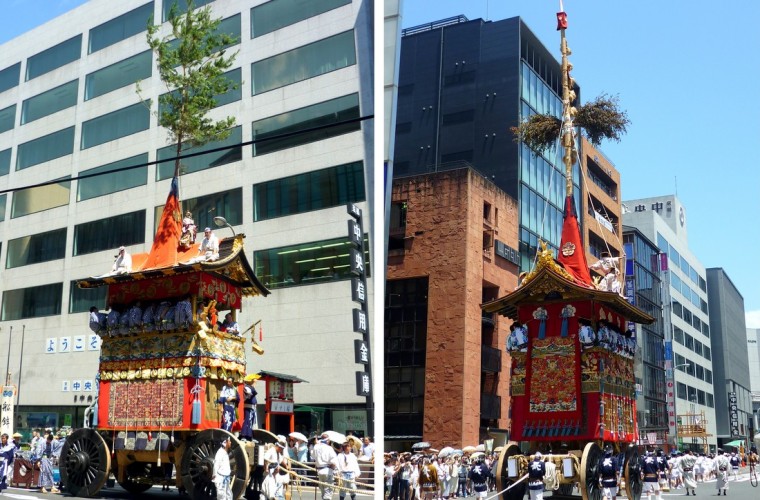

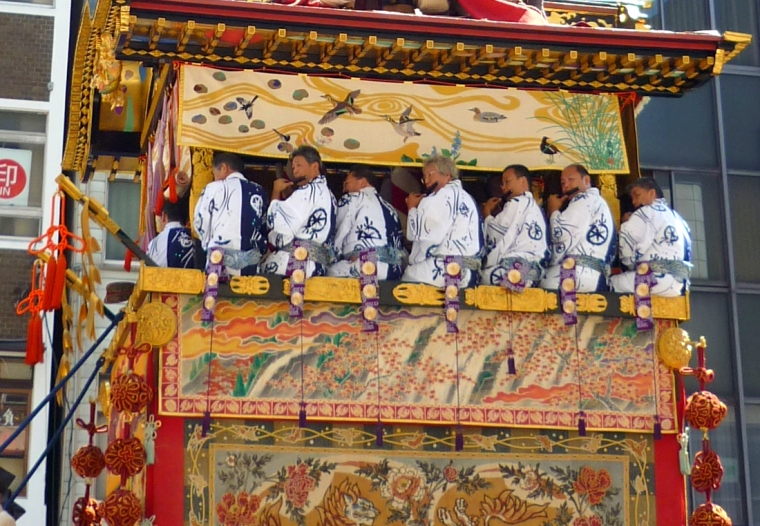
The Float Procession
The floats are the main drawcard of the Gion Matsuri. The first type of float is called a “hoko”. There are 10 hoko floats, each weighing a whopping 10,000kg. They reach up to 25m tall, and are pulled by 40-50 men. The second type of float is called a “yama”. There are 23 of these smaller floats which weigh about 1,000kg, are up 6m tall, and are pushed by 14-24 men. They are accompanied by dancers and musicians playing the flute, ringing bells and drumming.
As part of the festivities, from July 10th to 14th, the floats are actually assembled from scratch. Roughly 180 men follow ancient methods to put the pieces together. Remarkably, not a single nail is used.
Decorated with luxurious tapestries, lanterns, pine trees and gold painted sculptures, the floats are often called movable pieces of art. They show off the unparalleled textile and craft industry that Kyoto is so well known for.
 Left: yama float, Right: hoko float
Left: yama float, Right: hoko float Preparing to turn the float 90-degrees
Preparing to turn the float 90-degrees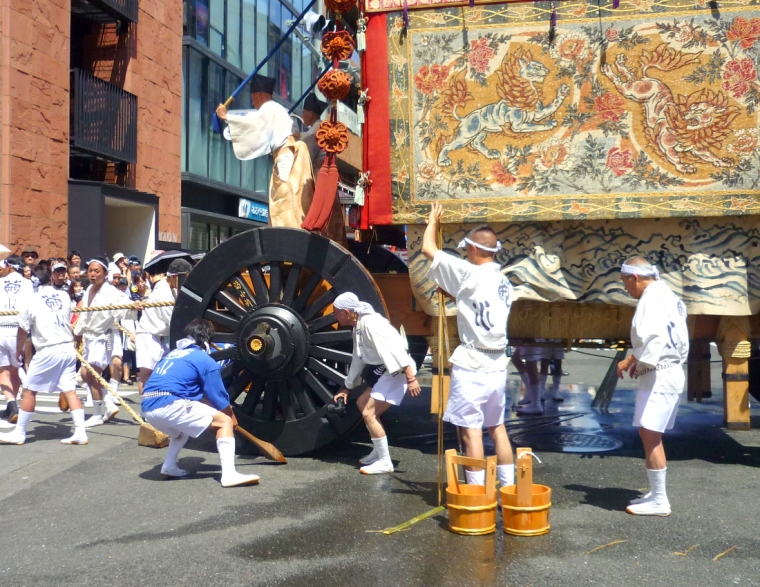 Using flattened bamboo and water to turn the float
Using flattened bamboo and water to turn the float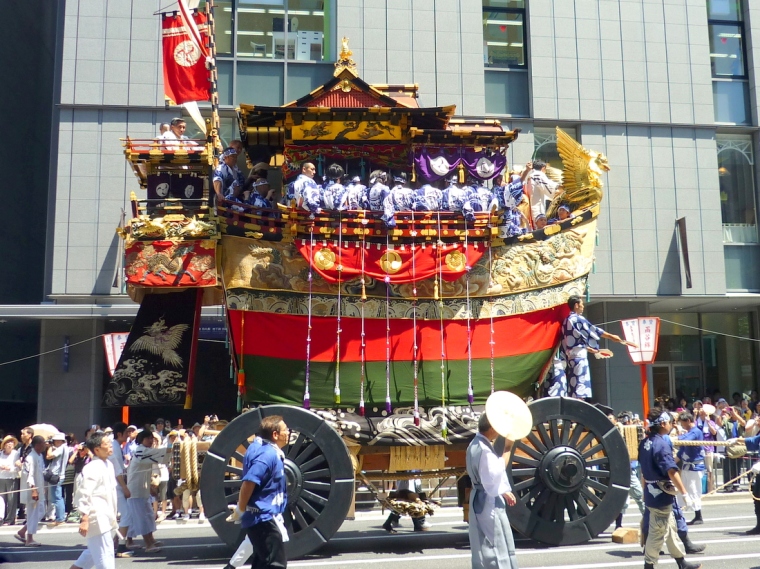 Fune-boko (Boat float)
Fune-boko (Boat float)
When To Go
So the festival officially starts July 1st and runs till July 31st, but when is the best time to actually go? There are many smaller religious events and ceremonies that take place each day for the locals and those closely involved.
For visiting spectators, there are two daytime processions: the main one is on 17th and another is on 24th. There are also nighttime street parties on the three nights leading up to both processions.
If you’re able to secure accommodation, I’d recommend staying on July 16th so you can see the night events and then the procession on the 17th. If you can only visit as a day trip, then definitely July 17th is what I’d recommend. The main procession, called Yamaboko Junko, starts around 9am and runs along Shijo-dori from Karasuma Station to Kawaramachi Station, then north up to Oike-dori near Kyoto Shiyakusho-Mae Station. Any of these three subway stations would be good access points to take you straight to the action – though be warned, it’ll be very crowded!
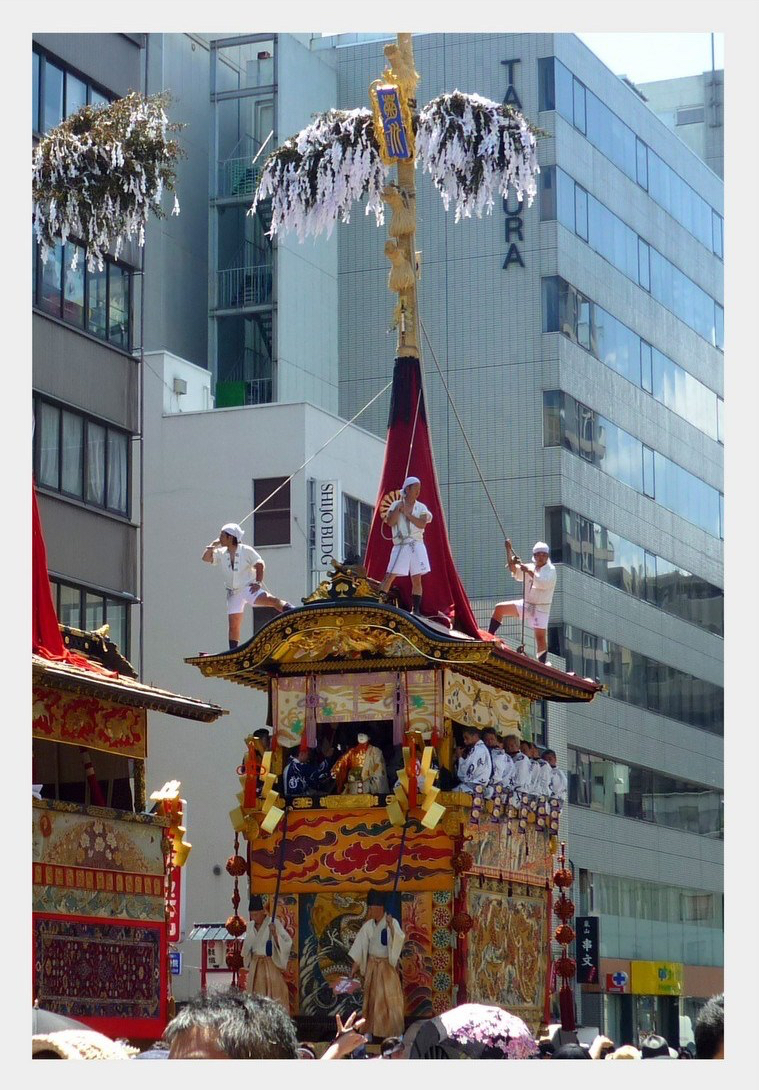
Have you been to the Gion Matsuri before? What are some traditional summer festivals you’ve attended?



Celia, a 1000-year festival, held almost every year! I will have to keep that in mind if and when I visit Tokyo. Thank you!
LikeLike
It’s in Kyoto.
LikeLike
It’s so impressive, isn’t it! Definitely check it out if you’re ever here in July :)
LikeLike
I’ll echo Celia’s praise for Gion Matsuri. It’s sure to blow you away. Just spectacular. Arrive early to get a good spot to view and bring a fan to keep cool. It’s very humid and hot in Kyoto.
LikeLiked by 1 person
Thanks, Susan :) I remember the heat was pretty terrible, and probably made worse with so many people packed together. Fans or cool packs are essential!
LikeLike
wow, it is amazing, i went to Japan last year but đid not attend this festival
LikeLike
Thanks! I hope you get to catch a festival next time you visit. They’re so much fun.
LikeLike